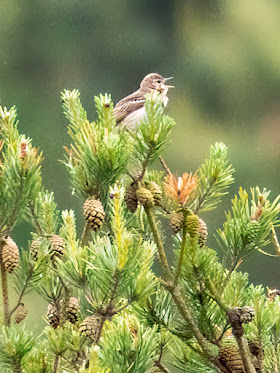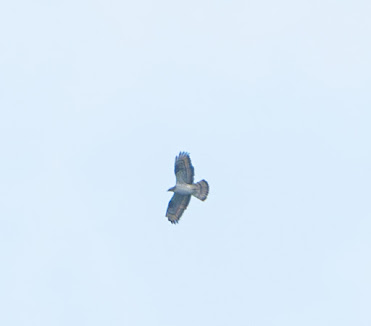Saturday 31st May 2025
Ashdown Forest, Sussex
I made a belated attempt to twitch the Red-backed Shrike that was reported by Phil and Jem earlier today, after family commitments took us to Brighton for lunch. With help from Colin, who was just leaving as I arrived, and Andrew A, a Kent birder who had brought his telescope and joined me as we headed out to look for the bird, I was finally able to make the twitch.
The shrike had left Old Lodge and moved down into the adjacent valley, as Colin had said. Unfortunately, it had moved even further away and we found ourselves hemmed in by fences, some 50 metres short of the viewing point.
- Thankfully, Andrew found a vantage point and used his scope to scan the area and he soon spotted the shrike sitting proudly near the top of some bushes. We were able to get good views and followed the bird as it moved around the area. Sadly, a family of six came by and disturbed the bird, causing it to move away and become lost to our view.
- I have included a couple of photographs Martin took at lunchtime, while I was in Brighton.
One of the luckiest sightings I have ever made! Thanks, Colin and Andrew.
2025 species count = 179










































